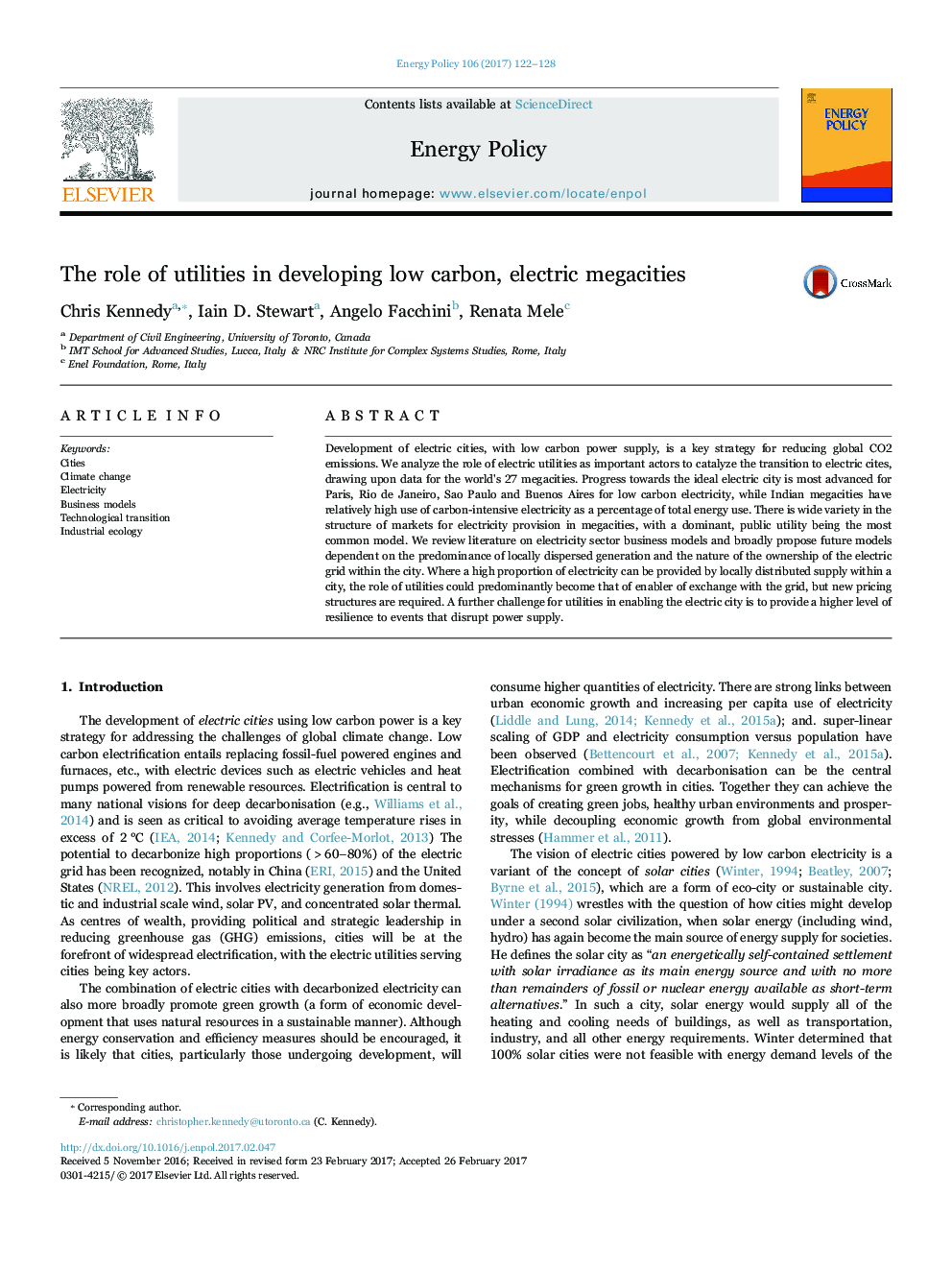| Article ID | Journal | Published Year | Pages | File Type |
|---|---|---|---|---|
| 5105802 | Energy Policy | 2017 | 7 Pages |
Abstract
Development of electric cities, with low carbon power supply, is a key strategy for reducing global CO2 emissions. We analyze the role of electric utilities as important actors to catalyze the transition to electric cites, drawing upon data for the world's 27 megacities. Progress towards the ideal electric city is most advanced for Paris, Rio de Janeiro, Sao Paulo and Buenos Aires for low carbon electricity, while Indian megacities have relatively high use of carbon-intensive electricity as a percentage of total energy use. There is wide variety in the structure of markets for electricity provision in megacities, with a dominant, public utility being the most common model. We review literature on electricity sector business models and broadly propose future models dependent on the predominance of locally dispersed generation and the nature of the ownership of the electric grid within the city. Where a high proportion of electricity can be provided by locally distributed supply within a city, the role of utilities could predominantly become that of enabler of exchange with the grid, but new pricing structures are required. A further challenge for utilities in enabling the electric city is to provide a higher level of resilience to events that disrupt power supply.
Related Topics
Physical Sciences and Engineering
Energy
Energy Engineering and Power Technology
Authors
Chris Kennedy, Iain D. Stewart, Angelo Facchini, Renata Mele,
